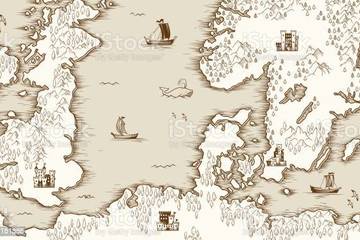Browse
Youth Empowerment
Predominantly inattentive type. The student may: o submit inaccurate or incomplete work, o have difficulty attending to conversations, activities, or tasks, o be easily distracted, o have difficulty following directions, o frequently lose materials, and/or o have difficulty organizing tasks and materials.
By:
Anne miller New vijayalaxmi santosh mhetre mali
Thursday, May 13, 2021
YOUTH EMPOWERMENT

Leave a comment
Predominantly inattentive type.
The student may:
o submit inaccurate or incomplete work,
o have difficulty attending to conversations, activities, or tasks,
o be easily distracted,
o have difficulty following directions,
o frequently lose materials, and/or
o have difficulty organizing tasks and materials.
By:
Anne miller New vijayalaxmi santosh mhetre mali
Thursday, May 13, 2021
CULTURE AND SOCIETY
+1

Leave a comment
What is Attention Deficit Hyperactivity Disorder?
Primer text from The College of William & MaryADHD is one of the most commonly diagnosed conditions of children (Centers for DiseaseControl and Prevention, 2015).
In a 2016 Centers for Disease Control and Prevention study, scientists found that 6.1 million children aged 2-17 years living in the U.S. had been diagnosed with attention-deficit/hyperactivity disorder (ADHD), which is similar to previous estimates.
Ages 2-5: Approximately 388,000 children
Ages 6-11: Approximately 2.4 million children
Ages 12-17: Approximately 3.3 million children
The diagnostic term attention deficit/hyperactivity disorder (ADHD) refers to individuals who display patterns of inattention, impulsivity, and overactive behavior that interfere with daily functioning (American Psychiatric Association [APA], 2013).
The Diagnostic and Statistical Manual (DSM) V (APA, 2013) criteria for diagnosing ADHD listthree types of ADHD and the accompanying characteristics.
By:
Jen Martins Henzansanath
Wednesday, May 12, 2021
HEALTH AND NUTRITION
+1
No Preview Available
Leave a comment
Agri and food Scholar
Global Competence Framework
The four-part framework (investigating the issue, recognizing perspectives, communicating ideas, taking action) incorporated into this micro-credential reflects the changing role of our students in the 21st century. Students must have a substantive understanding of the complex, diverse, and interdependent world in which they live. Educators will delve into the research that supports the students becoming globally competent through inquiry. The four-part framework is described below. Additional resources are available in the “Supporting Rationale and Research” section and should be examined prior to completing this micro-credential.
Investigate the worldStudents must engage in activities and explorations where they are able to investigate their world beyond their immediate environment. Research that is age-appropriate should be conducted where problems are framed that are significant at the local, regional, or global leve
By:
Jony Karn
Wednesday, May 12, 2021
CULTURE AND SOCIETY
+1
YOUTH EMPOWERMENT
Tuesday, Mar 30, 2021

Leave a comment
Supporting Rationale and Research
The following research informs and supports the development of globally and culturally competent students.
Mansilla and Jackson, Educating for Global Competence: Preparing our Youth to Engage the World, CCSSO and Asia Society. (2011)
http://asiasociety.org/files/book-globalcompetence.pdf
The resulting work of the EdSteps Global Competence Task Force details the relevance of global competence in education and describes practical applications that demonstrate what global competence looks like in interactions between educators and learners.
By:
Scarlet Patrick
Thursday, May 13, 2021
CULTURE AND SOCIETY
+1
No Preview Available
Leave a comment
Agri and food Scholar
The four-part framework (investigating the issue, recognizing perspectives, communicating ideas, taking action) incorporated into this micro-credential reflects the changing role of our students in the 21st century. Students must have a substantive understanding of the complex, diverse, and interdependent world in which they live. Educators will delve into the research that supports the students becoming globally competent through inquiry. The four-part framework is described below. Additional resources are available in the “Supporting Rationale and Research” section and should be examined prior to completing this micro-credential.
Investigate the worldStudents must engage in activities and explorations where they are able to investigate their world beyond their immediate environment. Research that is age-appropriate should be conducted where problems are framed that are significant at the local, regional, or global level.
By:
Jenny Reze Scarlet
Wednesday, May 12, 2021
HEALTH AND NUTRITION
+1

Leave a comment
Global Competence Framework
The four-part framework (investigating the issue, recognizing perspectives, communicating ideas, taking action) incorporated into this micro-credential reflects the changing role of our students in the 21st century. Students must have a substantive understanding of the complex, diverse, and interdependent world in which they live. Educators will delve into the research that supports the students becoming globally competent through inquiry. The four-part framework is described below. Additional resources are available in the “Supporting Rationale and Research” section and should be examined prior to completing this micro-credential.
Investigate the worldStudents must engage in activities and explorations where they are able to investigate their world beyond their immediate environment. Research that is age-appropriate should be conducted where problems are framed that are significant at the local, regional, or global level.
By:
Jenny Reze Scarlet
Wednesday, May 12, 2021
AGRI-FOOD SYSTEMS
+2
Leave a comment
Agro grant
The educator uses current research and resources aligned with global education to create a yearly resource plan. The educator identifies strategies and activities that support the global competence framework, and incorporates them into lessons, assignments, activities, or assessments.
Method Components
Educating a new generation of globally and culturally competent students is imperative. A clear framework for global competence requires students to engage in robust and rigorous exploration that includes investigating the world, recognizing perspectives, communicating ideas, and taking action.
By:
Jenny Reze Scarlet
Wednesday, May 12, 2021
YOUTH EMPOWERMENT

Leave a comment
Educating a new generation of globally and culturally competent students is imperative. A clear framework for global competence requires students to engage in robust and rigorous exploration that includes investigating the world, recognizing perspectives, communicating ideas, and taking action.
By:
Jenny Reze Scarlet
Thursday, May 13, 2021
AGRI-FOOD SYSTEMS
+1

Leave a comment
This is the third micro-credential in the “21st Century Learning through Global Education” stack. It is encouraged that the micro-credentials in this stack are earned in sequence, as each skill builds on the previous one in the stack.
By:
Jenny Reze Scarlet
Thursday, May 13, 2021
CULTURE AND SOCIETY
+1

Leave a comment
The educator uses current research and resources aligned with global education to create a yearly resource plan. The educator identifies strategies and activities that support the global competence framework, and incorporates them into lessons, assignments, activities, or assessments
By:
Jenny Reze Scarlet
Thursday, May 13, 2021
AGRI-FOOD SYSTEMS
+6

Leave a comment